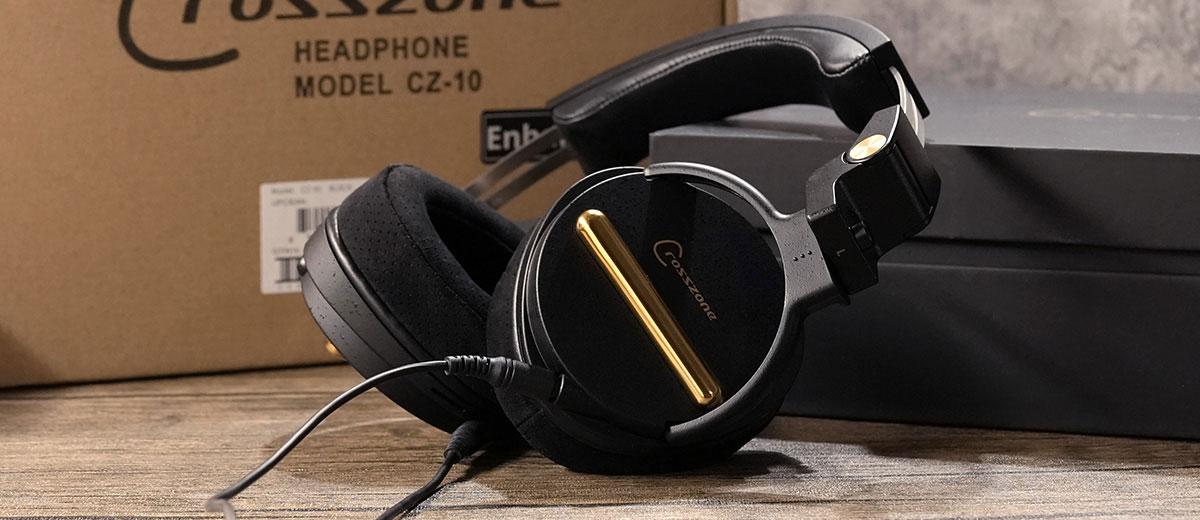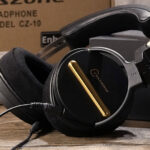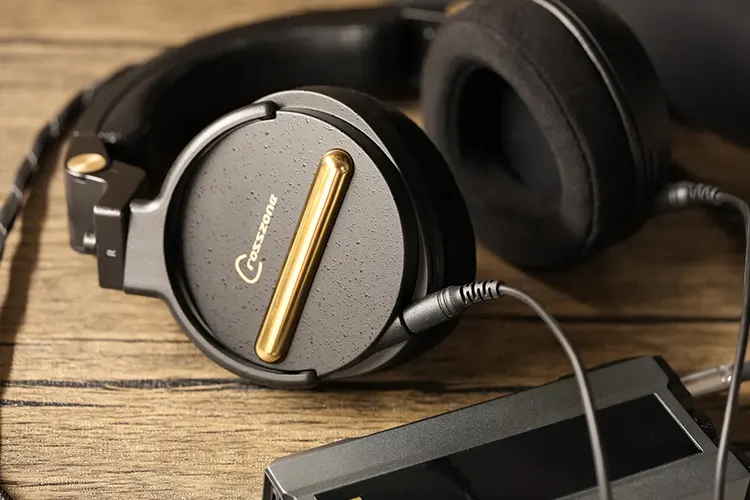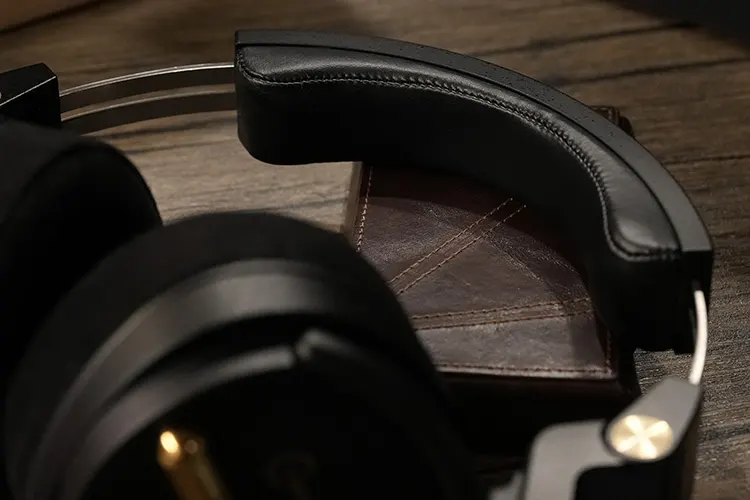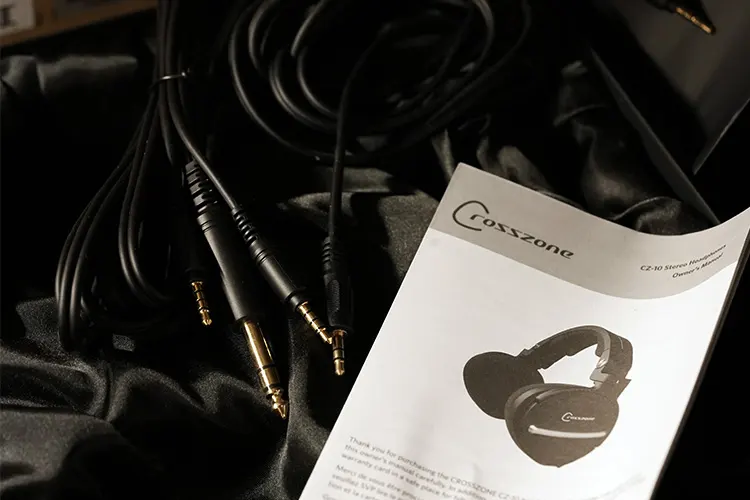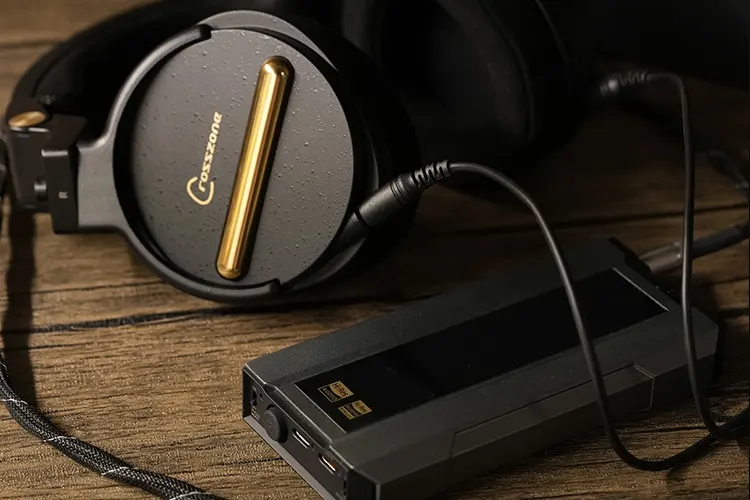Today, James reviews the Crosszone CZ-10 Enhanced, which is a triple dynamic driver set of closed-back headphones designed to mimic speakers. It is priced at $995.
Disclaimer: This was sent to me as a sample in exchange for my honest opinion. Headfonics is an independent website with no affiliate links or services. I thank Crosszone for its support.
You can click here to learn more about the Crosszone audio products we have previously reviewed on Headfonics.
Note that this post follows our current scoring guidelines which you can read in more detail here.
One of the more unusual headphones in today’s review is the Crosszone CZ-10 Enhanced which has a 3-driver array per side and a unique tuning approach.
Priced at $995, the CZ-10 Enhanced is positioned below the soon-to-be-reviewed CZ-8a Enhanced and the older flagship CZ-1 and is considered the brand’s entry-level product.
For long-time readers, you may recall Marcus reviewing their CZ-1 flagship headphones six years ago, which also uses the same design methodology.
As these headphones are unique with soundstage capability as their key selling point, I will compare them against the similarly spacious Sennheiser HD 800s and the latest Moondrop COSMO to see how they fare against more ‘mainstream’ offerings.
Features
The Crosszone CZ-10 Enhanced is a set of closed-back dynamic driver circumaural headphones. They are rated at a fairly high 75Ω impedance with a sensitivity of 99 dB @1kHz meaning good quality voltage-bias amplifiers might be ideal.
They are equipped with no less than 3 dynamic drivers of varying size per side with each driver covering a specific frequency range.
Two drivers (for high and low frequencies) create the direct sound and another 35mm driver creates what is defined as a reverse channel sound.
Crosszone has implemented this specific configuration in the Crosszone CZ-10 Enhanced to achieve an out-of-the-head listening experience akin to how you hear a set of stereo speakers.
The specific technology is called Acoustic Resonance Technology (ART) and Acoustic Delay Chambers (ADC) and was developed from the ground up by Crosszone.
However, this doesn’t mean that there is a 3-way crossover. They use high-frequency and low-frequency drivers to create the “direct sound” that faces the ear canal.
The other driver is responsible for the sound from the opposite channel as if your left ear can also hear what your right ear can hear but with a short delay, achieved by the two air chambers that physically delay the waveforms.
This precise setup inside the Crosszone CZ-10 Enhanced ideally creates a spacious staging experience and a spatial sound similar to a speaker stereo field.
Design
The structure of the CZ-10 Enhanced version is very differentiated from the competition.
It has a molded plastic framework and a broad headband which enhances the weight distribution, everything looks bold and firmly constructed with a smooth finish and a very Japanese-styled external paint scheme.
A gold-plated bar accents the external cup design which looks quite attractive. It is not only for decoration, there are special constructions inside for the original ADC (Acoustic Delay Chamber) technology.
Comfort & Isolation
Although the appearance of the CZ-10 is very bold and rigid, it is very flexible and rather light in weight at just 385g.
The pads are very breathable with a 3DD fulcrum-shaped design. Combined with a thickly padded and curved headband, the weight is evenly distributed, providing a surprisingly comfortable even after 3 hours of listening.
Crosszone also tries to reduce the CZ-10 Enhanced lateral pressure not only by the stiff headband but also by a spring-controlled hinge, which enhances the comfort for different individuals.
The spring is not strong, and it just helps to add a tiny bit of extra force to assist the headphones in pressing against the head to create a better seal.
In practice, whether you stretch the CZ-10 Enhanced wide or let them stay in their original position, the clamping force is quite similar. Isolation, on the other hand, is satisfactory, and it doesn’t leak much of what you are listening to on the outside.
Stock Cable
The CZ-10 Enhanced comes with two OFC cables, including a 1.5 m, 3.5mm terminated one and a 3.5m, 6.3mm terminated one.
To separate the left and right channels, the cable uses a proprietary 4-wire x 2 configuration, and the end that connects to the cups on either side is terminated with 4-pole 3.5mm plugs.
I would recommend owners get the 4.4mm balanced upgrade cable, which will allow you to benefit from a stronger balanced output as well as enhanced tonal balance.
Packaging & Accessories
The CZ-10 Enhanced comes in a well-protected box with a nicely printed sleeve. Taking it off, the headphones are presented in a foam-padded paper box with user manuals in an envelope.
You will find the two cables mentioned above sitting below the headphones, and the shiny gold-colored parts on the CZ-10 Enhanced are well protected from knocks and smudges with plastic film.
Sound Impressions
More than 100 hours of burn-in is given to the CZ-10 Enhanced as usual, and it is tested with amplifiers with higher output, including the FiiO K19, the xDuoo XD05 Pro, and the HIFIMAN EF500.
Summary
I was initially quite skeptical about whether the design of the CZ-10 Enhanced version would result in a messy or veiled sound especially when they aim to achieve an out-of-the-head effect, which can easily sound hollow as if listening in a cave.
However, the CZ-10 seems to be an exception. I have been testing it with different music genres, and to my surprise, it sounds stereophonic. Vocals and various instruments still maintain their distinguishable image and sound well separated.
The unconventional placement of the drivers emphasizes the depth and intensifies the layering effect and texture. It also renders the stage in a lively way I have never experienced before without sacrificing technicalities or sounding muffled or unnatural.
Bass
The bass on the CZ-10 Enhanced is well-elaborated, although it doesn’t have an extremely deep sub-bass due to the driver size.
Nevertheless, the bass intensity is strong and rich with a nicely compressed airy punch, rendering string instruments and kick drums with good weight while maintaining sufficient speed.
I particularly enjoy the bass guitars and acoustic guitars on the CZ-10 Enhanced. They sound very well separated from the backing, clear and intense, and very stereophonic they maintain a strong and defined bass line with nice sustain.
Bass notes on the piano also have a satisfying weight, with natural decay helping to capture the emotion in the recording. The multiple, fast drivers on the CZ-10 Enhanced seem to add extra texture, thickening the bass line, and strengthening the presence of harmonics.
When properly powered, the full-bodied, punchy low-end significantly contributes to an immersive experience. Especially when paired with bass-intensive, relaxing EDM or with lighter voices, and older pop songs with slower tempos.
However, with faster-paced music and when more instruments come into the mix, the elevated bass may get a bit overwhelming.
Mids
While the bass is well-elaborated and lays a good foundation for elements across the mid-lows, the 1kHz range sounds more muted than the bass, but I won’t call it recessed. It positions the vocals further from the listener.
Due to this, I find the sweet spot for listening to vocals at a higher volume. Initially, the vocals may take a minute or two for the brain to adjust and comprehend. Afterward, it may just feel like a smoothened, marginally laid-back tuning.
Articulation, on the other hand, is satisfactory and feels different from common headphones. The vocals are well separated from the bass-intensive backing and aren’t much colored by the power in the low end surprisingly, as if listening to a 2-way speaker.
There is sufficient texture, a stereophonic image, and good fullness, especially for lighter voices and instruments across the midrange, whereas darker voices may sound more softened.
The tuning works nicely with drums and acoustic instruments sounding airy and organic. It delivers a stronger presence than regular headphones but may not sound as distinctly positioned.
Pressing down the bass via EQ will enhance the overall balance and allow more nuances to be heard.
Treble
When adequately powered, especially with the 4.4mm upgrade cable, there is sufficient energy for the vocals to cut through the mix and balance out the bass presence
Overall, the treble sounds relaxed with small bumps around 5kHz to 8kHz that add to the bite. Beyond that, the roll-off is quite steep so it limits the openness. That helps to make lighter voicing timbre sweeter sounding but when listening to powerful sopranos, more brilliance is preferable.
It may feel like it is lacking bite when listening to other headphones that intentionally emphasize the higher frequencies for stronger perceived details.
I suspect the physical design intentionally weakens the upper treble zone to mimic a more lifelike soundscape that doesn’t sound as sharp.
Staging & Dynamics
The stage rendering makes this pair of headphones special. It sounds different from regular headphone driver setups or cross-feed plugins I previously experienced.
I would consider the stage rendering quite expansive for a closed-back design, although it can’t match what open-back headphones can give you. However, this is great for those who want to listen without disturbing others.
It feels like listening to a 2.1 system in a room, with the bass sounding slightly boomy but the upper frequencies and the image still sounding focused, with sufficient weight in the vocal line.
While the bass is intensive, it isn’t overly thick and is well-layered, sounding richer in the midrange compared to listening on conventional headphones.
As for the width, the X-axis is more intimate than the W-axis, rendering an oval-shaped soundscape. You can hear the left channel via the right ear cup and vice versa. This strengthens the perceived room ambiance and thickens the note quality.
The vocal positioning is focused in front of the forehead similar to listening to live shows where the speakers hang above.
While the imaging is not as pin-point focused as conventional headphones, I like how the CZ-10 Enhanced blends the different channels to create stronger texture and thickness.
When opening my eyes and listening to music without actively trying to focus on the instrument positions, the CZ-10 sounds very immersive and exhibits a strong stereo effect.
Click on page 2 below for my recommended pairings and selected comparisons.

